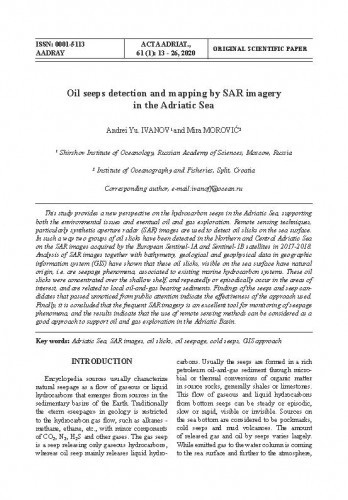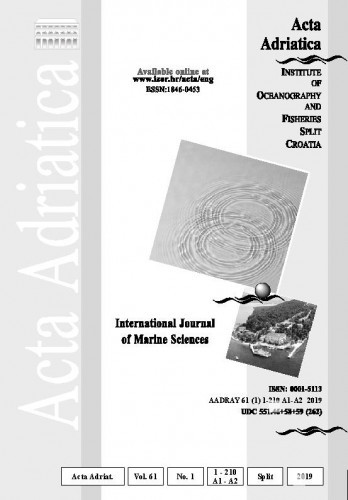This study provides a new perspective on the hydrocarbon seeps in the Adriatic Sea, supporting both the environmental issues and eventual oil and gas exploration. Remote sensing techniques, particularly synthetic aperture radar (SAR) images are used to detect oil slicks on the sea surface. In such a way two groups of oil slicks have been detected in the Northern and Central Adriatic Sea on the SAR images acquired by the European Sentinel-1A and Sentinel-1B satellites in 2017-2018. Analysis of SAR images together with bathymetry, geological and geophysical data in geographic information system (GIS) have shown that these oil slicks, visible on the sea surface have natural origin, i.e. are seepage phenomena, associated to existing marine hydrocarbon systems. These oil slicks were concentrated over the shallow shelf, and repeatedly or episodically occur in the areas of interest, and are related to local oil-and-gas bearing sediments. Findings of the seeps and seep candidates that passed unnoticed from public attention indicate the effectiveness of the approach used. Finally, it is concluded that the frequent SAR imagery is an excellent tool for monitoring of seepage phenomena, and the results indicate that the use of remote sensing methods can be considered as a good approach to support oil and gas exploration in the Adriatic Basin.; Ovaj rad daje novu prespektivu problemu istjecanja ugljikovodika iz podmorja na Jadranu, podržavajući pitanja zaštite morskog okoliša kao i eventualno istraživanje nafte i plina. Tehnike daljinskog otkrivanja, osobito snimci “synthetic aperture” radara (SAR) korištene su za otkrivanje uljnih mrlja na površini mora. Na taj su način na sjevernom i na srednjem Jadranu otkrivene dvije grupe mrlja na SAR snimcima dobivenim od europskih satelita Sentinel-1A i Sentinel-1B u razdoblju 2017.- 2018. Analiza SAR snimaka uz batimetriju, geološke i geofizičke podatke kroz geografski informacijski sustav (GIS) pokazala je da nađene uljne mrlje, vidljive na površini mora, imaju pri-rodno porijeklo, t.j. da pripadaju fenomenu podmorskih istjecanja, povezanih s postojećim ležištima ugljikovodika. Ove su uljne mrlje koncentrirane na plitkom šelfu i opetovano ili povremeno se pojavljuju u istraživanom području, a u vezi su sa sedimentima koji sadrže naftu ili plin. Nalaženje takvih izvora ili kandidata za izvore, koji su prošli neopaženi od javnosti, ukazuje na učinkovitost ovog pristupa. Konačno, zaključeno je kako su česti SAR snimci odličan alat za monitoring fenomena curenja iz podmorja, a rezultati pokazuju kako se korištenje daljinskih metoda može smatrati dobrim pristupom za istraživanje nafte i plina u jadranskom bazenu.
Sažetak

 Acta Adriatica : 61,1(2020) / glavni urednik Jakov Dulčić.
Acta Adriatica : 61,1(2020) / glavni urednik Jakov Dulčić.